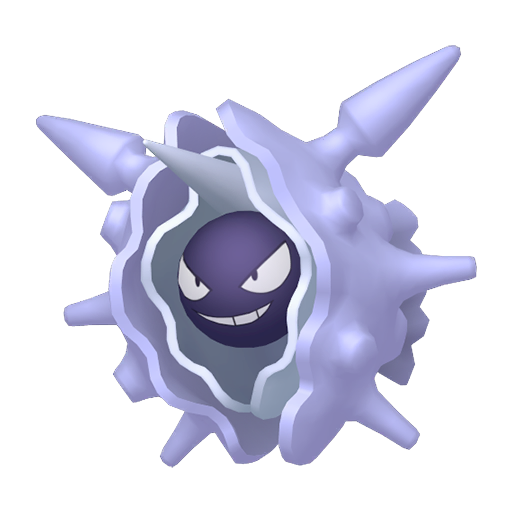Cloyster
The Water/Ice type Pokemon. Discover comprehensive stats, moves, evolution chain, and game locations.
Pokédex #91

Water
Ice
Pokemon Details
Species: Bivalve Pokémon
Height: 1.5 m
Weight: 132.5 kg
Abilities:
- Shell Armor
- Skill Link
- Overcoat (Hidden Ability)
Training
EV Yield: 2 Defense
Catch Rate: 60
Base Friendship: 50
Base Exp: 184
Growth Rate: Slow
Breeding
Egg Groups:
Egg Cycles (Steps):
- Min:
- Max:
Gender:
- Male: %
- Female: %
Stats
95
180
50
85
45
70
Total
525
Type Guide
Learn when this Pokémon is a good pick. “Great against” are types your moves hit hard. “Watch out for” are move types that hit you hard.
Great against
Ground×4
×2
Rock×2
Watch out for
Electric×2
Grass×2
Fighting×2
Rock×2
Not very effective on
Water×0.25
Ice×0.5
Steel×0.5
Takes reduced damage from
Water×0.5
Ice×0.25
Try a matchup
Pick the opponent’s types to see how your moves perform.
Your damage:×1Even
Tip: Dual-type opponents combine both types. For example, Water/Flying takes ×4 from Electric moves.
Pokémon Moves by Learning Method
| Name | Level | Type | Category | Power | Accuracy |
|---|---|---|---|---|---|
| Supersonic | 1 | Normal | Status | - | 55 |
| Aurora Beam | 1 | Ice | Special | 65 | 100 |
| Withdraw | 1 | Water | Status | - | - |
| Toxic Spikes | 1 | Poison | Status | - | - |
| Protect | 1 | Normal | Status | - | - |
| Spikes | 28 | Ground | Status | - | - |
| Spike Cannon | 40 | Normal | Physical | 20 | 100 |
Game Locations
| Game | Location |
|---|---|
| Heartgold | Evolve Shellder - Evolution |
| Soulsilver | Evolve Shellder - Evolution |
Pokedex Entries
| Game | Entry |
|---|---|
| Heartgold | Once it slams its shell shut, it is impossible to open, even by those with superior strength. |
| Soulsilver | CLOYSTER that live in seas with harsh tidal currents grow large, sharp spikes on their shells. |